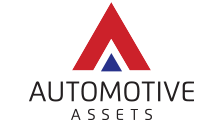The mining and farming industries already use ‘fleet’ services to improve efficiency, health and safety and reduce operating costs.
AV delivery and commercial truck prototypes already exist. The only factor currently preventing rollout is politics.
1.5 million users currently take advantage of 20 car sharing/car-pooling/e-hailing programmes in the USA. This is certain to increase dramatically both in the USA and Europe.
A predicted 35 million people will share approximately 246,000 vehicles. But it’s also predicted that only 6 million will share in the USA compared to 14 million in Europe and 15 million in the Asia-Pacific region.
In the short term however, people will still want their own vehicle.
The majority of delivery and commercial fleets will be AVs.
Early adopters will use AVs.
OEMs will need to make the decision on how to position themselves. Consumers on AVs will prefer to work directly with specialist OEM staff for experience and OEM parts rather than contacting dealerships.
Insurance model will shift to OEM.
Industry analyst Frost and Sullivan predicts that e-retailing of automotive parts will grow in some European countries by 20%-30% each year until 2020.
Furthermore, when online searches are analysed, the results reveal that 11% more are made for aftersales compared to those for used cars. This highlights the increase in demand for online parts purchases.
Forecasting will therefore become key for those OEMs and their dealerships that choose to sell direct to consumers via e-commerce platforms. Ensuring the right parts are in stock both in-store and online when consumers want them will support sales and build consumer loyalty.
A consumer might seek a cheaper deal from an independent parts provider if the the OEM and their dealer’s stock is low. 30% of spare parts that are available online are already sold to repair shops with 60% sold directly to the end user.
Manufacturers will feel the impact on their profitability resulting from the growth in adoption of AVs, particularly in parts sales.
Currently, every manufacturer relies on profit contributions derived from the sales of OEM parts to accident repairers. The proportion of these contributions varies by brand but parts sales profits are still a major source of revenue.
However, the predicted reduction of vehicles on the road and the increase in AV vehicles means a corresponding forecast of a big reduction in traffic accidents. This will have the knock-on effect of a significant decrease in profit contributions from parts sales, creating a big hole in all manufacturers’ profit and loss.
Manufacturers who want to try to survive this change will be forced to re-engineer their business model. They will focus on the biggest potential areas for cost saving and gaining incremental value – which, of course, will be the traditional dealer networks.
The predominance of AVs is predicted to bring big changes to society: more time, hassle-free travel and parking, a drop in accident rates, an average of one car per household and job losses in driving roles (trucks, cars, taxis, trains etc.).
Morgan Stanley’s analysts have estimated that in the USA alone, a 90% reduction in the number of vehicle accidents could annually save nearly 30,000 lives whilst preventing 2.12 million injuries . Traffic delays and jams would be to all intents and purposes a thing of the past. This will create a time saving of 38 hours a year– almost a full working week – per North American commuter.
The impact of the predicted dominance of AVs could well be huge. Analysts at PricewaterhouseCoopers estimate that the on-the-road vehicle count will reduce by 99%. They predict that the vehicle fleet will plummet, down from 245 million to only 2.4 million.
Looking at past history, such revolutions and innovations tend to be ‘the writing on the wall’ for brands locked into a conventional business model – think of Polaroid, Woolworths, Barnes and Noble, Kodak and Blockbuster to name but a few. Given the predictions by analysts and the lessons of history, it doubtful whether major global auto manufacturers like Ford, General Motors and Toyota could survive such a fundamental change.
These manufacturers and others like them are based on the macro model: designing and building huge numbers of vehicles in myriad variations to allow for individual customer configuration preferences. They carry equally huge overheads, something they will find hard to maintain in a scenario where sales fall dramatically.
Some industry commentators believe that many if not all of these macro-manufacturers could well be insolvent within the next fifteen years. This may open the window to startup auto manufacturers such as Tesla. They could potentially flourish by making smaller volume fleet sales to companies such Uber, by providing a leaner range of more generic models with simplified options.
Other than a house purchase, a car is generally the second most costly investment that a household budget has to find money for. Added to this, research by Morgan Stanley in the US reveals that cars are driven only 4% of the time. When you consider that the average cost of car ownership in the US is nearly $9,000 per annum, that percentage of car usage makes it an expensive necessity, never mind a luxury. Research in the US also reveals that 60% of adults questioned said they would ride in an AV. Almost 32% stated that when AVs became available they would no longer drive. And where the US leads, so often the rest of the world follows.
Another study (conducted by Columbia University) inferred that utilising a mere 9,000-strong fleet of AVs, Uber might be able to replace all New York City taxis. The average waiting time was estimated as 36 seconds. Costs per ride were estimated at approximately 50 cents per mile. The relatively inexpensive ride costs and hassle-free transport envisaged would make owning a car a ‘no-go’. AV taxi services would operate within a ‘cloud’ transportation model.
Conclusion on The Effect Of Autonomous Vehicles
Clearly, if the number of vehicles on the road is reduced by 90% with the advent of AV’s, many dealer points will become redundant. Manufacturers may well cease using independently-owned dealer networks and adopt the Tesla model, with their own sales points in key strategic locations to safeguard their profitability.
If independents do still have a place, the level of investment in technology and people required to maintain and troubleshoot a much higher level of digital software will be on a scale not seen in the retail motor industry before.
Do you still want to be a dealer in this ‘new world’? Or, should you begin to consider your options in the short term before it becomes too late and many dealerships flood the market?
What are your plans? What is in your Board’s strategy to future-proof your business against these significant changes in the industry? Begin planning now so that you are prepared when the time comes.

